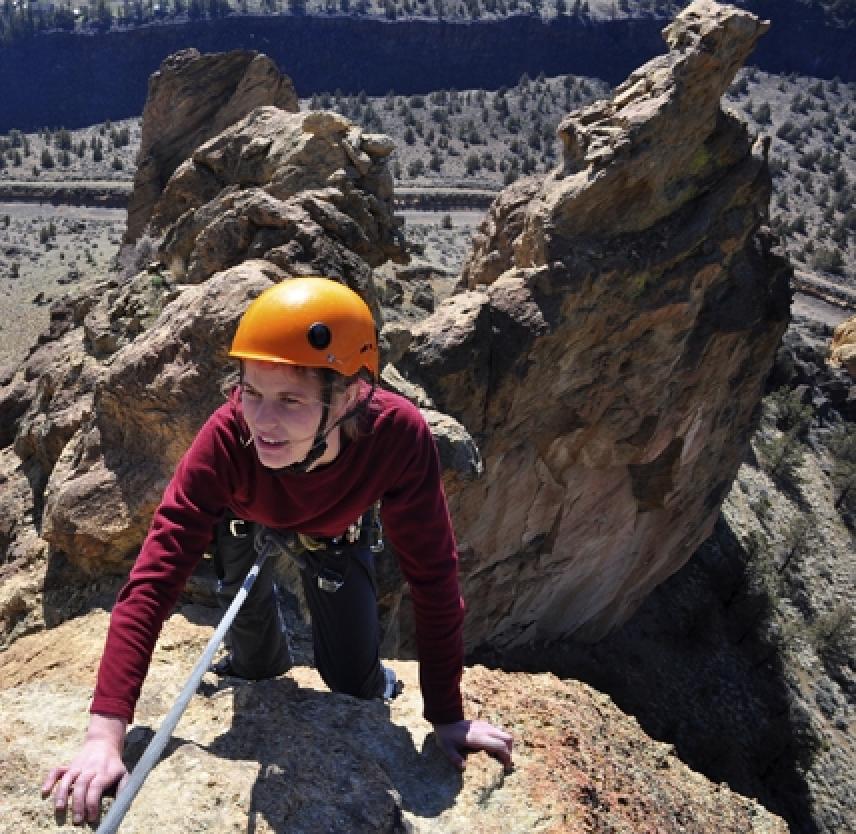
Summer is a time to be outside and get active. But be safe! Avoid brain injury by following these important tips:
1. Wear a helmet
A helmet is the single most effective way to prevent head injury from a bicycle crash.1 Make sure you always wear a properly fitted helmet. A proper fit means the helmet is not too wide or loose and doesn’t tip backwards exposing the forehead.2 Using an approved helmet for bicycling reduces the risk of brain injury by 63 to 88 percent for all ages.3 Be sure your helmet — no matter what sport or activity the helmet is specifically designed for — is approved by a group that tests helmets for safety, such as the Consumer Product Safety Commission (CPSC) or Snell B-95 standards.
2. Use a life jacket
Wearing a life jacket can save your life by keeping your head above water if you become unconscious or incapacitated. Non-fatal drowning can cause brain damage resulting in long-term disabilities, including memory problems, learning disabilities, and permanent loss of basic functioning (e.g., permanent vegetative state). In 2008, 709 people died from boating incidents, and 9 out of 10 of those who drowned weren’t wearing life jackets.4 There are life jackets available for any type of water activity; you don’t have to use the bulky orange ones, get something stylish!
3. Always buckle up
In 2006, seat belts saved an estimated 15,383 lives among passenger vehicle occupants over 4 years old. Motor vehicle crashes are the leading cause of death for young adults 16 to 20.5
During a crash, a seatbelt helps keep a person more secure inside the vehicle than if not wearing a seatbelt. Being completely thrown out of a vehicle is almost always deadly.6
4. Watch children at all times in or near water
Each year, approximately 3,000 children under the age of 5 are treated in emergency rooms for submersion injuries.7 Many of these kids are left with a permanent disability, including brain damage. Children like to explore and discover new things, so take the following steps to keep them safe:
- Use safety gates or define perimeters to keep children from wandering off and getting into serious trouble, especially around backyard swimming pools. 8 Pools should always have fences all the way around them.9
- Get training in basic water rescue skills, first aid, and CPR.
- Learn to swim and teach your children to swim.
5. Celebrate safely and if you drink, do it responsibly
- Every day, 36 people in the United States die, and approximately 700 more are injured in motor vehicle crashes that involve an alcohol-impaired driver.10
- Always designate a non-drinking driver before any celebration begins.
- If no one in the group is sober, call a cab or phone another friend, but don’t get behind the wheel of a car.
6. Check out your child’s playground
Each year, emergency departments treat more than 200,000 children ages 14 and younger for playground-related injuries.12
- Ensure that playground equipment is age-appropriate and properly maintained. Look for adequate surfacing under equipment and loose or broken screws on the equipment itself.
- Actively supervise children on playgrounds.
- Keep toddlers under age 5 in a separate play area, fenced off from equipment designed for bigger kids.
7. Play safely
Approximately 2 out of 5 traumatic brain injuries in children are related to sports and recreational activities.13
- Choose the right equipment for the right sport. Make sure you and your child wear protective gear such as wrist guards, knee and elbow pads, and a helmet during roller sports.
- Update old gear to newer equipment; the newer equipment may incorporate new safety features or new materials to prevent injury.
8. Know the signs and symptoms of concussion
A concussion is a traumatic brain injury. A repeat injury can be deadly or can leave a lasting impairment. When in doubt, sit it out and seek medical attention from someone who understands traumatic brain injury.
So go outside, be active, have fun … but be safe out there.
For more information on keeping your family safe, visit the CDC’s Injury Center.
Sources
- NHTSA’s National Center for Statistics and Analysis, Traffic Safety Facts, 2008 Data, Bicyclists and Other Cyclists.
- US Dept of Transportation Federal Highway Administration, BIKESAFE, "Crash Factors."
- Thompson DC, Rivara FP, Thompson R. Helmets for preventing head and facial injuries in bicyclists. Cochrane Database Syst Rev1999;4:CD001855
- Center For Disease Control and Injury And Prevention, Unintentional Drowning: Fact Sheet.
- National Highway Traffic Safety Administration, 2006 Motor Vehicle Occupant Protection FACTS.
- National Highway Traffic Safety Administration, “The Top Five Things You Should Know About Buckling Up.”
- US Consumer Product Safety Commission, “Swimming Pool and Spa Safety Starts with You!” www.poolsafety.gov.
- American Academy of Pediatrics, Swimming Pool Safety.
- Klass, P. "When a Child Gets Hurt, a Sibling May Be at Risk," The New York Times, June 8, 2010.
- Centers for Disease Control and Prevention, Injury Prevention & Motor Vehicle Safety.
- Centers For Disease Control and Prevention, Playground Injuries: Fact Sheet.
- Safe Kids USA, “Playground Safety for Little Kids At Play.”
- Safe Kids USA, Sport and Recreation Safety Fact Sheet.
BrainLine
